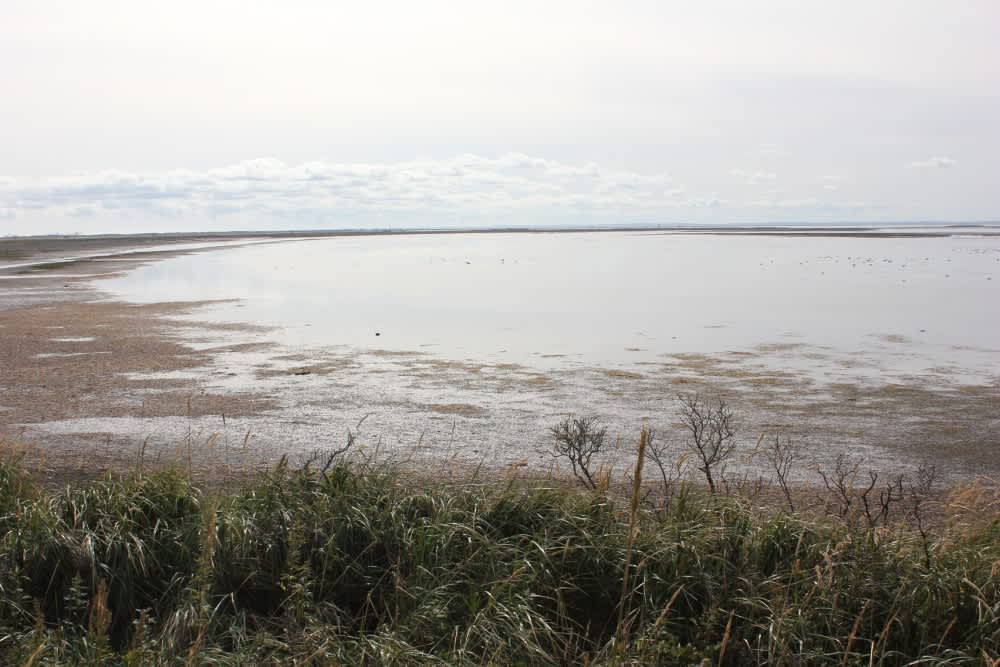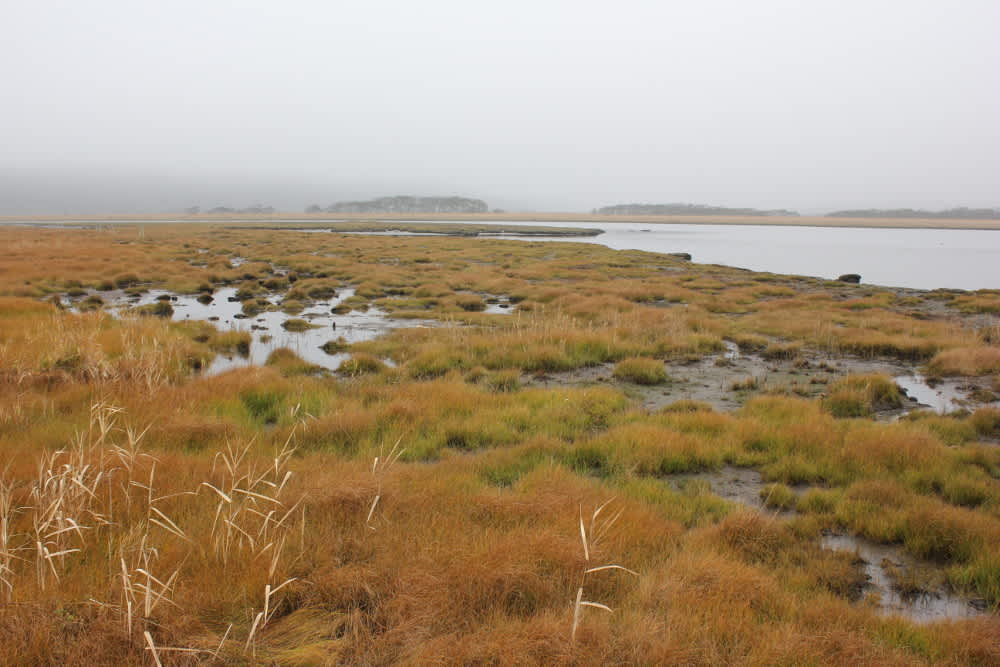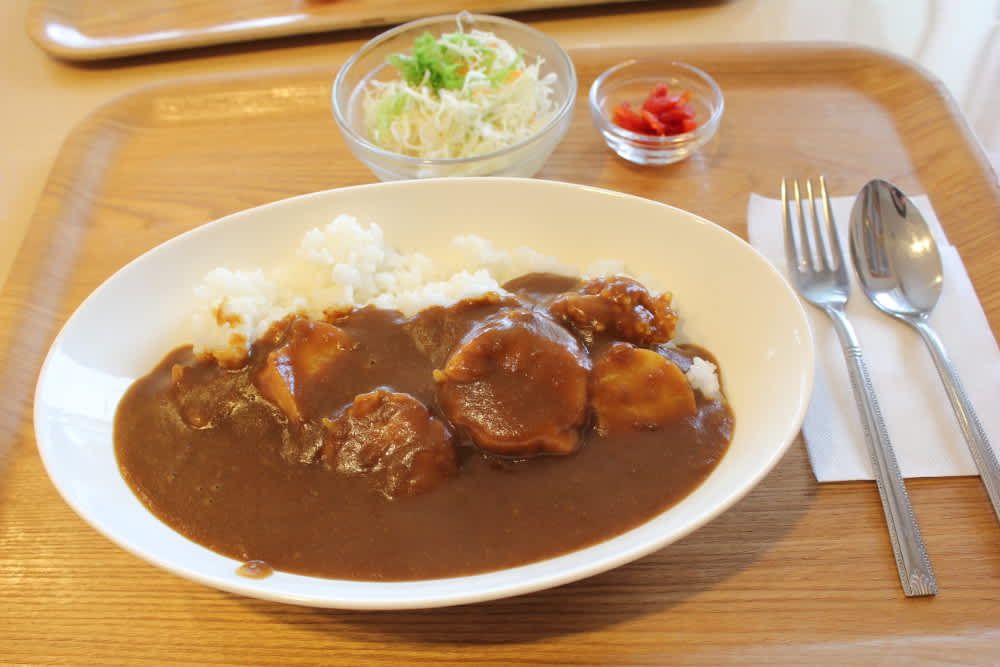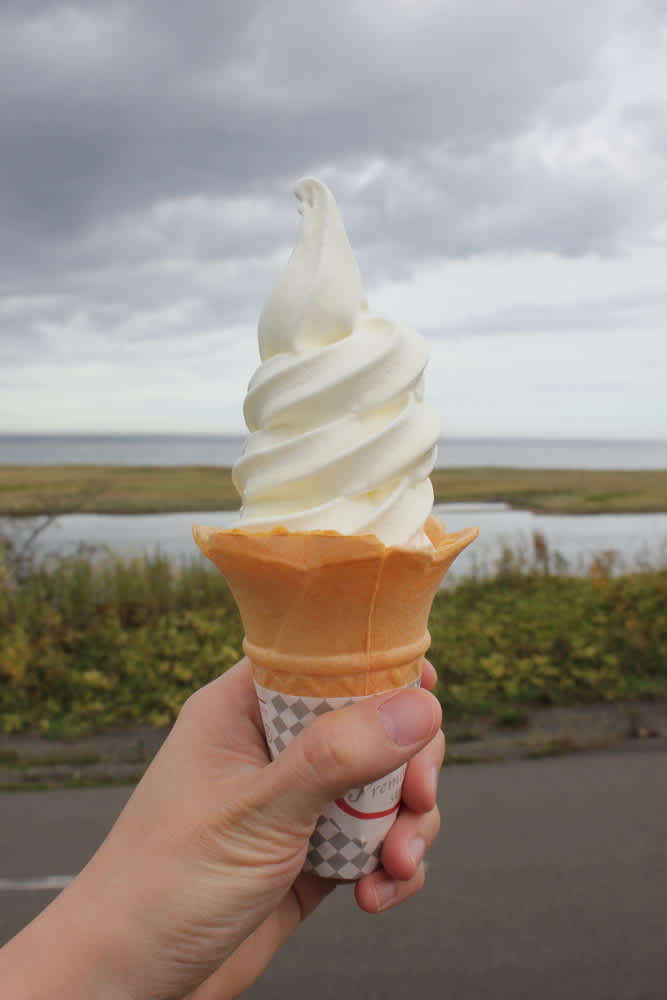I was lucky enough to visit Hokkaido’s doto region – Eastern Hokkaido on a recent trip to Japan.
Places to see
Notsuke Peninsula
Notsuke is a curved ‘prawn-shaped’ peninsula stretching 26km into the Nemuro Strait. It is also Japan’s largest sandbank. We drove through the peninsula and could see a view of Shiretoko Peninsula in the distance.

Notsuke Bay is home to some unique landscapes of trees called todowara (fir straw) and nadawara (Mongolian oak) that have been withered by saltwater. The diverse wetland environment makes the peninsula an important stopover for migratory birds like the Grey-tailed Tattler, Whooper Swan and Brent Goose. Over 20,000 birds visit every spring and autumn. Notsuke Bay is quite shallow and is home to a large sea-grass bed. In summer and autumn, Hokkai Shrimp are caught by traditional sail-powered fishing boats.
We made a brief stop at the Notsuke Peninsula Nature Center to pick up some tourist information, and admired the view of the saltwater marshes from the outdoor viewing deck.

I was told that Notsuke Peninsula will disappear in the next 20 years due to erosion, so I was glad to have visited.
Kiritappu Shitsugen (Wetland)
The town of Hamanaka is home to Japan’s 3rd largest wetland (or marsh), after Kushiro Shitsugen National Park and Sarobetsu Field, also in Hokkaido. The marsh is an area of 3,168 hectares and faces the Pacific Ocean.
I travelled there in early October, in autumn, when the weather is supposed to be crisp, with clear blue skies. But a day before we arrived, I was told the area experienced unseasonably warm weather, meaning the area was covered in heavy fog. I also later heard that the neighbouring town of Kushiro is called the town of fog, and sees over 100 days of fog each year.

Most of the areas around the wetland are privately owned, and the NPO Kiritappu Shitsugen National Trust was established in 2000 to protect the marsh.
The wetlands are breeding ground for tancho (Japanese red-crowned cranes), an auspicious symbol, said to represent long life. Over 1,000 tancho inhabit Eastern Hokkaido – up from just 20 after efforts were made towards conservation.
The marshes in autumn are a golden colour – and there were mosquitoes galore despite the cooler weather (so beware!). Kiritappu Shitsugen is known as the wetland of flowers. If you visit from June through August, you can see many colourful wildflowers such as Kushiro Hanashinobu, a type of Jacob’s ladder, Japanese Iris, Ezo Kanzo, Hare’s Tail Cotton-grass and more.
I saw a tancho flying away in the distance and again standing in a field, but couldn’t capture any photos up close unfortunately.
In Hamanaka, you can take a stroll on one of four boardwalks through the wetlands.

Lake Mochirippu
Mochirippu Marsh is believed to have been the inspiration for the film set of the Studio Ghibli animated film ‘When Marnie Was There’. We saw some tancho on the lake.

It was certainly pretty but there were mosquitoes everywhere!
Cape Kiritappu
Cape Kiritappu is the film set of the Japanese movie ‘Hanamizuki’ starring Ikuta Toma and Aragaki Yui. The cape stands 40-60m above sea level and is a common spot for tokkari (seal in the Ainu language) and rakko (sea otter in Ainu) sightings. Unfortunately the weather was windy and rainy the day we went, so it wasn’t as beautiful as we had hoped…


Things to eat
Michi-no-eki Odaito
We made a stop at the roadside rest area Michi-no-eki Odaito for lunch one of the days. The area is famous for its jumbo Odaito scallops and also its delicious soft-serve ice-creams made of fresh Betsukai Milk. I ate a scallop curry on rice and finished my meal with a soft-serve!


Where to stay
Pension Porch
There aren’t many large hotels in the area, so we stayed in a pension called Pension Porch. A pension is a kind of guesthouse, usually Western-style, but similar to minshuku in the way that the room rates (8,500 yen per person twin-share or 9,000 yen for a single person) include dinner and breakfast. There are only four rooms available; three twin and one single room. They are all named after fish! I stayed in the single room, called the Yamabe (Trout) room.

Pension Porch is operated by a friendly husband and wife (the Urita’s). The rooms are small and the beds are very firm, but it has a nice cosy atmosphere, like staying in a quaint log cabin. The bathrooms are shared too, so you have to coordinate with other guests when to take a bath or shower. Free Wi-Fi is available too.

The highlight of our stay would definitely have to be the meals! They are home-cooked using local produce including seafood and were excellent.

Read part 2: Road to Shiretoko here.
Words and images by Stephanie Sng, JNTO Sydney Office staff.
About Travellers Blog
Travellers Blog entries are submitted by travellers communicating their travel experiences in Japan and are published ‘as is’. Opinions written do not necessarily reflect those of JNTO. If you wish to submit a blog, please submit an enquiry through the contact us page.




























































